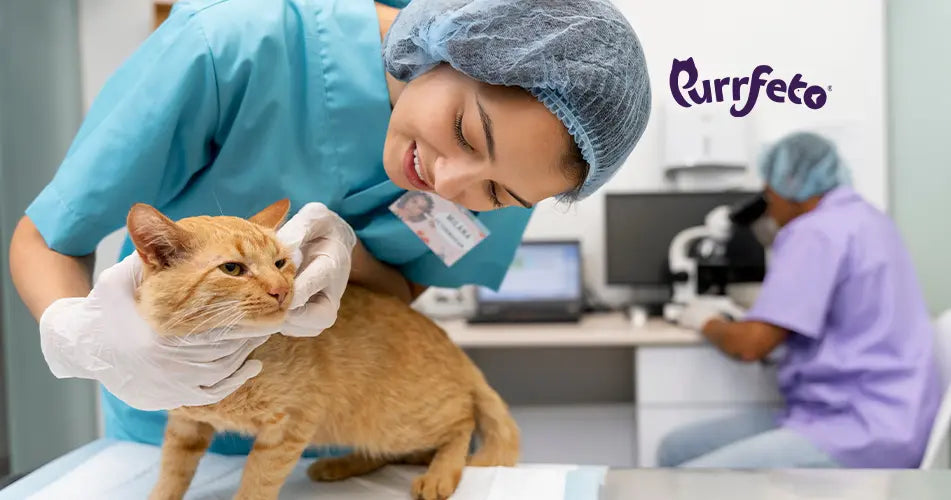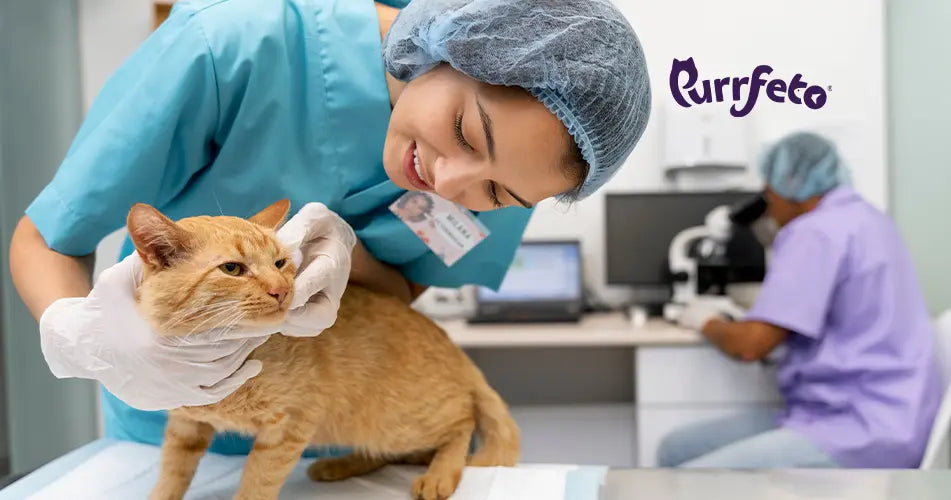Urinary Tract Infection (UTI) in cats occurs when bacteria enter the urinary system—usually through the urethra—and multiply, causing inflammation and discomfort. While UTIs are a part of Feline Lower Urinary Tract Disease (FLUTD in cats), it’s important to note that not all urinary issues are infections. In fact, true bacterial infections are less common in cats than in dogs.
FLUTD is an umbrella term that includes UTIs, bladder stones, crystals, and other urinary conditions. UTIs tend to affect older or less hydrated cats, especially those on a dry-food-only diet. Cats on dry diets often don’t consume enough water, which allows bacteria to thrive. Understanding the difference between a basic UTI and other urinary conditions is key to proper care.
Signs Your Cat Might Have a Urinary Tract Infection
Cats are masters at hiding pain, which means UTIs can go unnoticed until they become severe. Look out for these common symptoms:
- Frequent urination, often in small amounts
- Straining or crying while peeing
- Blood in the urine (may appear pink or red)
- Urinating outside the litter box
- Licking the genital area more than usual
If your cat suddenly avoids the litter box or seems to be visiting it more often with little output, it's a red flag. These symptoms shouldn’t be ignored. Early detection allows for easier treatment and prevents complications like bladder inflammation or kidney infections.
What Causes Urinary Tract Infections (UTIs) in Cats
Several factors can lead to urinary tract infections:
- Bacteria entering the urinary tract, usually from the skin or environment
- Dehydration, often from eating only dry food
- Obesity and stress, which affect overall cat urinary health
- A dirty litter box, which can encourage bacterial growth
- Underlying health conditions like kidney disease or diabetes
Cats with a weakened immune system or poor hygiene habits are especially prone. Ensuring proper hydration, nutrition, and a clean environment is critical for preventing UTIs and other feline urinary tract infections.
Why a Balance of Wet-Dry Food Is a Smart Choice to Prevent Cat UTIs
Cats have a low natural thirst drive, meaning they don’t always drink enough water on their own. That’s where wet cat food comes in. With a moisture content of about 70–80%, it plays a vital role in hydrating cats and supporting their urinary systems.
Benefits of feeding wet food include:
- Diluted urine, which reduces the chances of crystal or stone formation
- Flushing out toxins from the bladder more effectively
- Supporting kidney function, especially in older cats
However, it’s important to clarify that neither dry nor wet food is a treatment for UTIs. Instead, both formats (when complete and balanced) work together to promote overall urinary health.
Purrfeto offers a complete range of dry and wet cat food featuring functional ingredients like DL-methionine and cranberries that support bladder function as part of overall health. These are not condition-specific diets, but carefully balanced meals designed to meet daily nutritional needs while supporting hydration and well-being.
Some brands, like Purrfeto, offer urinary cat food formulas specifically designed to promote bladder health. These options are not only high in moisture and protein but also carefully balanced to maintain a healthy pH level in your cat’s urine. For long-term cat nutrition food, wet options are often the best food for cats with urinary concerns.
Conclusion
UTIs in cats are preventable, especially with early awareness and smart choices. A hydrated, well-fed cat is far less likely to face urinary infections. Switching to balanced dry and wet cat food, maintaining a clean litter area, and observing your cat’s behavior are simple steps that go a long way.
If you're looking for a diet that supports urinary health, Purrfeto has a range of high-quality wet and dry cat food formulated to keep your cat hydrated, nourished, and safe from infection.



 Back to Blogs
Back to Blogs 





